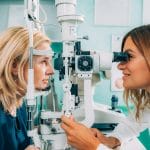While the population of older adults is growing rapidly in the United States, many have a preference to age in their own homes.
However, the need for health and safety often make living alone a challenge for older adults and for those providing for their care. Issues like falls, cognitive decline, mobility and medication adherence often complicate the challenges of independent living.
Fortunately, new technologies have been both created for and adapted to the caregiving needs of older adults living on their own.
These technologies have dramatically changed the landscape, giving peace of mind to family caregivers as they tend to their own daily responsibilities. Moreover, they often provide older adults with the security they need to continue living on their own.
The implications are significant. Many of the alternatives to aging in place or living independently can be costly and out of reach. Whether it requires hiring a professional caregiver, relying on a family member that may be employed, moving to an assisted living community, or moving in with a family member, the financial, emotional and social impacts can be devastating.
That said, here are a few technologies that can be used to help care for a family member remotely.
Medical Alert Systems
Medical alert devices, while not new technology, have dramatically expanded their capabilities. They now offer in-home and mobile devices, so individuals can be protected both in and outside their homes. They also come with automatic fall detection. Moreover, with mobile based apps, caregivers can monitor the location of their loved one, check on battery charges remotely and update the profile and instructions for emergency responders for things like medications, health conditions, emergency contacts, etc. With nearly one in four older adults experiencing a fall, Medical alerts remain a useful tool for peace of mind.
Digital Voice Assistants
Digital speaker voice assistants like Alexa have many caregiving uses. First, they can act as voice prompted speaker phones. This can be very helpful to those with poor finger dexterity, vision and or cognitive impairment. For example, caregivers can list contacts by name or relationship “my daughter” to make it easier to find, and by simply saying, “Alexa, call my daughter”, the call will be placed. Caregivers can also set scheduling reminders in the calendar that will be read out at the appropriate time, for things like medications and appointments. You can also set Alexa up to play music or change the tv channel by voice prompt.
Video Cameras
Video cameras are a great way to keep an eye on the safety of a parent. They’re also a great way to monitor who is coming in and out of the home and when. Lastly, if there are a lot of caregivers, housekeepers, therapists or social workers coming in and out of the home, highly visible video cameras act as a great deterrent for abuse or theft.
Video Doorbells
Video doorbells are another great way to monitor who is coming to the house and when. If hearing is a problem, the doorbell can be automatically set to the caregivers phone and she/he can remotely let the visitor in or provide instructions for leaving deliveries by the door.
Smart Home Technologies
App based control over things like thermostats and alarm systems can reduce the need to physically manage certain functions. Other innovative technologies like smart fridges can tell or show you when new grocery items need to be restocked. Motion censored lighting can ensure hallways are brightly lit during night time trips to the bathroom or kitchen to avoid trips and falls.
The Editorial Team at Healthcare Business Today is made up of experienced healthcare writers and editors, led by managing editor Daniel Casciato, who has over 25 years of experience in healthcare journalism. Since 1998, our team has delivered trusted, high-quality health and wellness content across numerous platforms.
Disclaimer: The content on this site is for general informational purposes only and is not intended as medical, legal, or financial advice. No content published here should be construed as a substitute for professional advice, diagnosis, or treatment. Always consult with a qualified healthcare or legal professional regarding your specific needs.
See our full disclaimer for more details.







